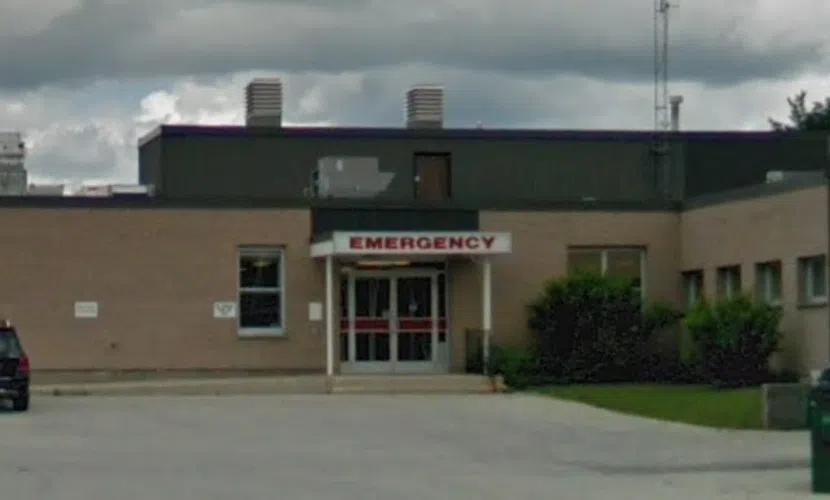Advocates for Durham’s hospital say the provincial government should set a standard of no hospital closures and refuse to let local boards shut small hospitals down.
The Ontario Health Coalition held a press conference with West Grey Mayor Kevin Eccles, the Presidents of the Ontario Nurses Association (ONA) and the Ontario Public Service Employees Union (OPSEU) at Queen’s Park in Toronto Thursday.
Eccles announced the municipality has hired a Toronto based law firm to fight the South Bruce Grey Health Centre’s decision to move all of Durham hospital’s inpatient beds to Kincardine and Walkerton due to a critical staff shortage.
Eccles didn’t share details, but said it will be a suit that puts pressure on the board and on the Ministry to “Take a look at the legal aspect of what the board has done.” Explaining to reporters, “Does the board have the right…and are they acting within their own charter? Have they stepped way out and beyond what they are?”
He says legal action will be launched within 48 hours from the time of that press conference. The beds are set to move out of Durham June 3rd.
Ontario Health Coalition Executive Director Natalie Mehra spoke at the conference Thursday, calling for a stop to any cuts or closures and asking of the provincial government, “Why is it that they’re not setting a policy of moratorium on hospital closures requiring local boards to at least try to maintain these services that communities have spent a century building?”
She added, “The provincial government is responsible for setting the standards. The local hospital board should be responsive to local communities, should consult with them for real, should represent their real healthcare needs and not the desires to centralize services or empire build in certain sites at the expense of others.”
Mehra, who says she’s been working as a healthcare advocate for 27 years, believes the provincial government has the power to save the hospital from service cuts, asserting, “Every hospital, where they’ve tried to close it, in my experience, they’ve always said it was a staffing issue, and every time the minister intervened and said ‘You have to keep it open,’ miraculously, they found the staff.”
Mehra says, “Bottom line, this is a question of setting a standard and refusing to let them just shut down these services that they’ve wanted to shut down forever.” She claims there is sometimes an ’empire builder’ approach amalgamated hospital corporations take which includes a desire to close smaller sites and centralize services.
She added, “When you look at what’s happening in Durham, in Chesley next door where the emergency department has now been closed for year at night and often in the daytime as well, and is at imminent risk of closure, and you look at nearby Hanover where all the patients go, even though they want to centralize all the services and resources to Walkerton and Kincardine, leaving the patients going to Hanover, a completely overwhelmed hospital without the resources to provide for them– this minister is either the most incompetent minister we have ever seen, in my experience and I don’t say that lightly, or they’re doing it on purpose.”
Mehra listed off some examples of ministry interventions in hospital closures or service reductions in a number of places, including Wallaceburg (2016), St. Joseph’s Island Emergency Department at Matthews Memorial Hospital (south of Sault Ste Marie) and to stop the closure of the thoracic cancer surgery in Windsor (2013). “There has been no government in my experience in the modern history of public hospitals that has ever claimed that it is not their responsibility whether an entire community hospital closes,” said Mehra.
South Bruce Grey Health Centre has not publicly expressed any desire to fully close the Durham or Chesley sites. The board recently made the assertion during a public webinar, that by moving the inpatient beds in Durham it would free up staff time to address the health needs of the many people in the community without access to primary care, and also still function as an urgent and emergent care centre while ensuring operating hours are consistent despite a severe nursing staff shortage.




